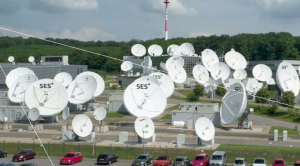
After more than 40 years of operation, DTVE is closing its doors and our website will no longer be updated daily. Thank you for all of your support.
SES faces ‘concerning’ decline in video business
 Satellite operator SES is facing a “concerning” decline in its video business, with guidance provided by the company of a 2% decline this year looking “optimistic”, according to analysts at Berenberg, which has placed a ‘hold’ recommendation on the Luxembourg operator’s stock following mixed full-year results.
Satellite operator SES is facing a “concerning” decline in its video business, with guidance provided by the company of a 2% decline this year looking “optimistic”, according to analysts at Berenberg, which has placed a ‘hold’ recommendation on the Luxembourg operator’s stock following mixed full-year results.
SES last week posted full-year revenues of €2.01 billion, up 1.7% at constant currency, with 15.8% growth in networks revenue offsetting a 4% decline in video revenue.
The company posted EBITDA of €1.256 billion, representing a reduced EBITDA margin of 62.5%, down from 65.1%.
CEO Steve Collar described 2018 as “a good year” with top-line growth, and a “break-out year for our networks business with double-digit underlying growth”. He said that the video business, which still represents two thirds of the total, had “scored important wins despite challenging market conditions”.
According to Berenberg, SES seems likely to face a worsening situation in its video business, even as its networks business delivers growth. SES has cut its 2020 revenue guidance from €2.11-2.21 billion to €2.06-2.16 billion as a result.
The analysts expressed concern that the shift from video to data could give investors pause because “data merits a lower multiple than video, given shorter contract duration and greater risk of capex obsolescence”.
Berenberg said that SES’s current share price reflects a market view that the US C-band Alliance that the company supports will succeed in monetising C-band spectrum.
Last year the alliance, which represents Intelsat, SES, Eutelsat and Telesat, could clear up to 200 MHz of mid-band spectrum to support 5G wireless deployment in the US.
In an updated proposal to the US Federal Communications Commission (FCC), the CBA increased the amount of spectrum that could be made available for 5G terrestrial use by 80% compared to the initial proposal made by Intelsat and SES. The group said that the C-band downlink spectrum could be cleared dependent on demand, while protecting current users and critical broadcast services.

